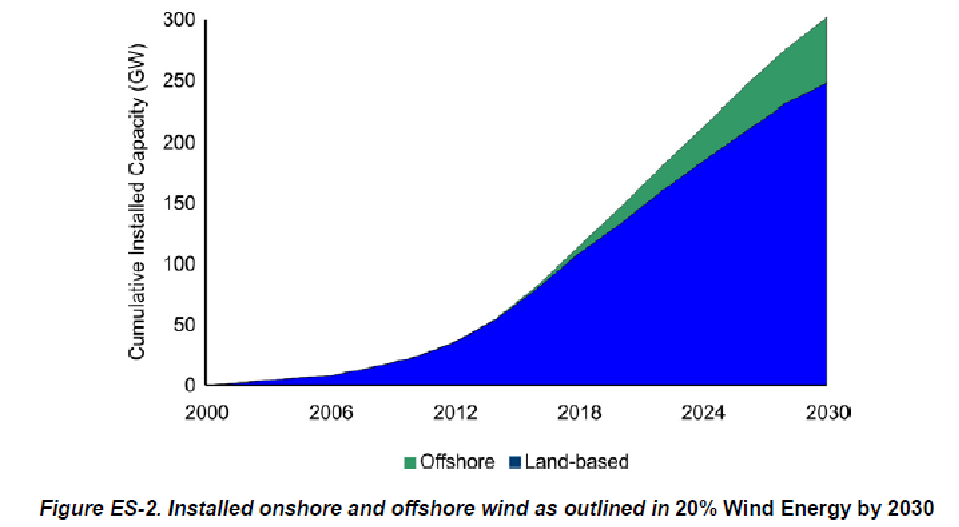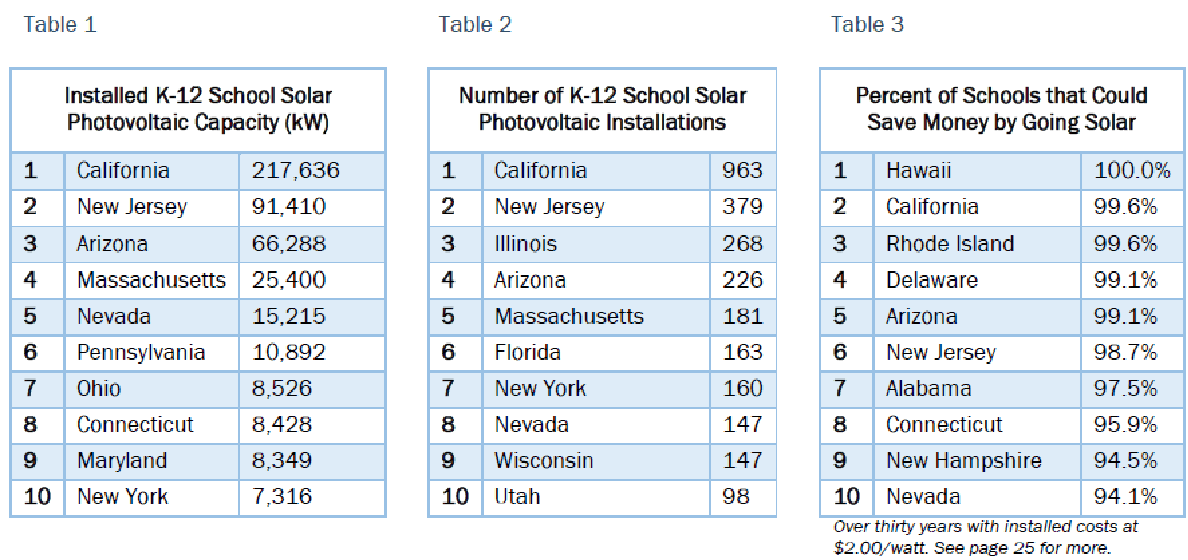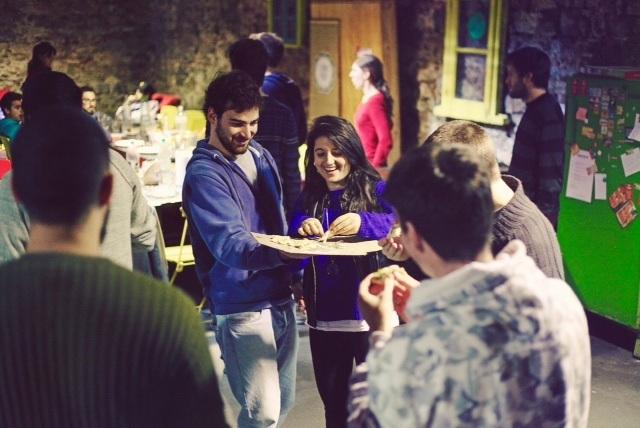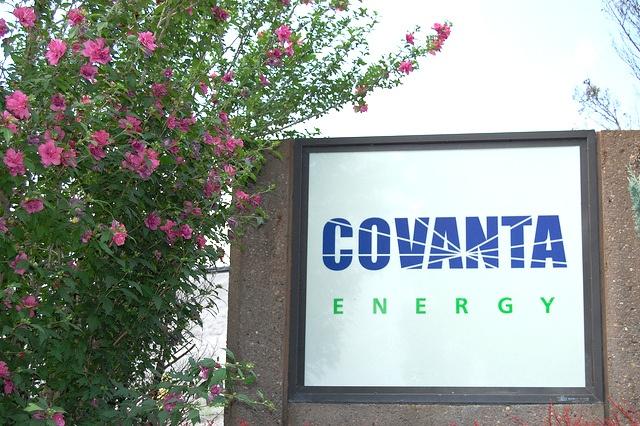DOE: 54-GWs of Untapped Offshore Wind Power


At least 54-gigawatts (GW) of U.S. offshore wind energy generation capacity could be deployed by 2030, according to a new study funded by the Department of Energy (DOE). The "National Offshore Wind Energy Grid Interconnection Study" (NOWEGIS) focused on helping DOE achieve two goals: reducing the cost of offshore wind energy and shortening the time required to deploy offshore wind generation capacity.
Researchers from ABB, the National Renewable Energy Lab (NREL), Duke Energy, AWS Truepower and the University of Pittsburgh's Swanson School of Engineering joined to produce NOWEGIS. The research team used NREL's Regional Energy Deployment System (ReDS) model for electricity generation and transmission to survey suitable offshore wind energy asset locations, calculated timelines for deployment of 54 GWs of clean, renewable electricity generation.
Study results indicate that 5 GW of offshore wind power could be online within a decade “using existing collection and interconnection technologies...[B]oth alternating current and direct current methods show promise in transporting offshore electricity to the land power grid,” DOE explains in a news release.
Tapping into offshore wind energy: Benefits and barriers
Deploying 54-GW of offshore wind generation capacity would cut annual national electricity production costs by some $7.68 billion – that's about $41 per megawatt-hour of offshore wind energy added to the grid. The cost reductions help justify the high initial capital outlay required to construct offshore wind generation platforms, the DOE highlights.
Though the technological and engineering aspects of deploying offshore wind generation assets are well understood, significant challenges remain, the DOE notes. Actually taking advantage of all that clean, renewable power potential depends on a host of political and economic factors, including state policies and federal permitting processes. Furthermore, ongoing advances in offshore wind energy technology across all its constituent parts need to be accounted for.
There's much to be gained, however. Local, state and the national economy would benefit greatly by promoting and fostering rapid deployment of offshore wind energy generation capacity. Doing so would create demand for a wide range of highly skilled tradespeople and support a “green” workforce for decades. It would also generate a stable, base of recurring revenues for local and state governments.
An aggressive campaign to deploy offshore wind generation capacity would also go a long way towards improving environmental health and quality by reducing greenhouse gas emissions. The costs of electricity would be disconnected from the global market for fossil fuels, providing utilities, businesses, cities and communities with a more stable, likely much lower long-term cost of electricity.
In addition to NOWEGIS, DOE released three other U.S. wind energy research reports this past month. There are 14 offshore wind energy projects with a total potential capacity of 4.9 GWs in advanced stages of development, according to Navigant Consulting's “Offshore Wind Market and Economic Analysis.”
In addition, DOE in September released the “2013 Wind Technologies Market Report,” which was produced by the Lawrence Berkeley National Laboratory, and the “2013 Distributed Wind Market Report,” which was produced by the Pacific Northwest National Laboratory.
*All graphics credit: U.S. DOE
Making Sustainability Part of Your Company’s Culture


By Nancy Bsales, Terrapass
The world of carbon offsets, sustainability, emissions and calculations, and environmental responsibilities can be overwhelming for any size business, but it doesn’t have to be. At TerraPass we have worked with hundreds of businesses large and small (and everywhere in between) with teams that have felt overwhelmed at one point or another. But we are here to assure you that thinking about your carbon footprint and reducing emissions isn’t as complicated as you might think.
For many large corporations, the plan is in place, knowledge is available and the road to sustainable growth is paved. But for more than 20 million small businesses -- defined as less than 500 employees according to Forbes -- the road can be filled with forks and potholes, and the GPS reading isn’t always clear. This is where TerraPass can help. We don't just sell carbon offsets. We also work to educate, calculate and offset emissions, build employee or customer engagement programs, or just to be a sounding board for ideas and understanding that starts the journey for your business in a new climate.
Many small to medium businesses start off the conversation with, “Why should we do this?” And that is quickly followed up with one word: “How?” These are simple question in theory, and they are best answered with an analogy.
So, why should you pay attention to climate change and be environmentally responsible? Imagine you learned you have high cholesterol from you doctor and that this high cholesterol, if left unchecked, could lead to a fatal heart attack. Wouldn’t you try to lower your cholesterol? Wouldn’t you want to know and do all that you could to slow or stop the process?
So, taking a blood test and learning your cholesterol level is high is like measuring your emissions output to see that your carbon footprint is high. Knowledge is power, and knowing where you stand with the numbers is the first step in the process of building your company’s path to a sustainable future. Why, you ask? Because you cannot manage what you don’t measure! Once you know the numbers and where you stand, it gives you a place to begin taking action to reduce your carbon footprint -- just like you would to help lower your cholesterol.
High Cholesterol: A doctor recommends diet, exercise and medicine for a healthier you.
High Carbon Footprint: Terrapass prescription to a healthier environment mirrors this, we prescribe technology, efficiency and market-based tools.
Did you know your carbon footprint can lead to simple discoveries that can help a business both large and small save money immediately? For example, if you are at the beginning of the journey, by evaluating your carbon profile, high energy intensive actions will bubble through. If natural gas emissions are very high, an adjustment to heating or an upgrade of a HVAC system will prove to be advantageous (especially at $1.50 per therm).
These savings can be seen more readily in a small-to-medium size business, but it doesn’t mean it isn’t true for all. Using a baseline as a comparison for the next year will show a reduction in emissions which is equivalent to savings -- and that is only the beginning. The place to start is to measure and find out where you stand.
TerraPass’ partner PortionPac, a mid-sized company, comments on the importance of understanding their baseline to help build a sustainable road map going forward:
"As a manufacturer of concentrated, pre-measured detergents for over 50 years, PortionPac is a company that has always been interested in better positioning itself as a leader in the sustainable marketplace. Partnering with TerraPass has helped us achieve this goal by providing a whole picture of our current and historical emissions footprint. The analysis we receive from TerraPass is a comprehensive snapshot of where we are today and offers practical suggestions for reducing emissions to ensure we arrive at where we need to be in the future," said John Paulin, communications manager for PortionPac Corp.
Once we know the numbers, what are you going to do about it? How do you lower your carbon footprint? Well, if climate change is the high cholesterol of the environment, offsets and Renewable Energy Credits (RECs) are like the cholesterol-lowering medicine that bridges the gap. The healthier your facilities and business practices become, the less offsets and RECs you will need to meet emission reduction goals. Conversely, just like the more you pay attention to your body’s health through proper diet and exercise, the less medicine you will need. The bonus for both is saving money, balancing risk, feeling good and building a better future.
Climate change is not simple, and the effects are definitely not simple, but taking action can be. If every small business, individual and large company come together to address climate change, we can make a difference. So, take that first step and calculate, then evaluate, your carbon profile. Whether a quick calculation online or a more complex assessment, measuring is the first step to management.
“Sometimes the riskiest decision you can make is to do nothing.” Richard Branson, VirginImage credit: Flickr/dexxus
Graphic courtesy of Terrapass
Nancy Bsales has worked in Sustainable Solutions at TerraPass for the last 8 years. Follow Nancy on twitter @NancyBsales or give her a call at 973-743-5374.
Reducing Power Plant Carbon Emissions Boosts Public Health


A recently released study suggests stronger power plant standards to cut carbon emissions could save lives and offer significant health benefits. The study, a joint effort by Harvard University, Boston University and Syracuse University, evaluated the impacts of various policy options to reduce power plant emissions on public health. The timing is important considering the U.S. Environmental Protection Agency (EPA) released carbon pollution standards, named the Clean Power Plan, for the first time in June. The suggested standards included a range of policy options, and the three universities’ researchers evaluated the three likely policy frameworks that would represent strategies for high, moderate and low targets for future carbon emissions reduction targets.
The study evaluated these three different carbon emissions policy scenarios for power plants to gauge which one would have the largest positive impact on public health. The first scenario, with the lowest targets and therefore the most energy-company friendly, would have only generated modest carbon emission reduction and created an uptick in public health risks. Another, the most rigorous plan on the compliance side, with high emission reduction targets but allowing no local flexibility and lacking any energy efficiency measures, reduced carbon but offered limited improvements in public health. A more moderate approach, which allowed for local flexibility in meeting the EPA’s proposed rules, actually showed the most potential for reversing mortalities and hospitalizations attributed to climate change.
To those who study carbon emissions’ effects on public health, the results of this study should not be much of a surprise. The researchers estimated about 3,500 lives could be saved annually, or nine a day. The reasons included lower particulate matter, which could prevent heart attacks; and lower ground-level ozone, which in turn would reduce respiratory hospital admissions. Throughout the lower 48 states, the benefits would also include 1,000 fewer hospitalizations and 220 fewer heart attacks. While the improvements would be felt all over the country, the study suggested the states with most improvements would be in the northeast, Great Lakes and in the southeast.
So why would the strictest overall policy framework have only a marginal impact on public health? According to the study’s authors, while such a scenario would slash carbon emissions the most, it would actually offer lower decreases in sulphur dioxide and nitrogen oxide emissions than a more moderate approach—and it is those pollutants that are often at the root of carbon emission-related health problems. Considering regional differences in climate, environment and energy requirements across the year, more flexibility to account for local needs should strike most of us as being common sense.
For a country that still relies on fossil fuels to electrify communities, the results should send a signal to policy makers and energy companies alike. Retrofitting power plants is not enough to stall carbon emissions and their effects on public health; nor is a blanket restrictive policy addressed at reducing emissions enough to make a difference. More investments in energy efficiency, as well as sensitivity to the needs various communities face, have got to be a part of a future energy infrastructure as we prepare for a future where we must provide energy for a growing population—while sorting out how we are going to minimize the impacts on our climate and environment.
After a year in the Middle East and Latin America, Leon Kaye is based in California again. Follow him on Instagram and Twitter. Other thoughts of his are on his site, greengopost.com.
Image credit: Library of Congress
Coke v. Pepsi: Battle Stevia


The Coke vs. Pepsi “cola wars” was one of the 20th century’s greatest marketing campaigns, or scams, depending on your point of view. Both companies have become massive food and beverage giants while somehow perpetrating the myth that there is actually a taste difference between their flagship products (though insisting you can taste the difference between Coke and Pepsi is like saying you can taste the difference between a Whopper and Big Mac). But fast forward to the 21st century; while these companies are still strong, sales of fizzy drinks are flat. Some, such as diet soda products, are in decline or losing market share. Can stevia-based drinks reinvigorate the soft drinks industry?
The reasons Coca-Cola and PepsiCo’s sales of their most venerated products have struggled are all over the map. Obesity rates and their connections to sugary drinks are one. Health concerns over aspartame, sucralose, and years before, sodium saccharine are another. In a society where many younger consumers want to serve the latest and coolest in their mason jars, cola drinks don’t exactly cut it. There is also much more competition than there was a decade ago. Walk into a convenience store and the variety and colors of cans and bottles demonstrate Coca-Cola and PepsiCo's competition. The soda giants even own many of these newer brands -- any recent growth they've seen has come from new products, not sales of their older brands. Now two new products boasting calorie-free stevia root, Coca-Cola Life and Pepsi True, are set to hit shelves in the United States, and both companies hope they can reverse the slow but notable long term downtown in soft drink sales.
The first thing you notice about these products, of course, is the packaging. Both companies claim the green signifies the stevia leaf, but come on, marketers, the implicit message is that somehow these products are more “green” or “sustainable.” And perhaps they are. Both use a combination of sugar and stevia to limit the number of calories per serving to 60—a step up from high-fructose syrup, which many doctors and health experts say has contributed to Americans’ expanding waistlines the past four decades. The portions are smaller, too, with Coca-Cola life served in eight ounce bottles and Pepsi True for now in 7.5 ounce cans. But the big question is whether these beverages can succeed in the long term after their initial hype. While advocates of stevia tout it as a natural product, many consumers have long complained about stevia’s bitter aftertaste. Some analysts, as quoted in Business Insider, predict these drinks will fail in the end.
Part of the challenge is finding that middle ground. Consumers who drink low- or zero-calorie beverages are resigned to some compromise in taste; those who insist their drinks are fully leaded will not budge. And as an article this summer in the Guardian explained, Pepsi’s and Coke’s new drinks still hold plenty of sugar: the Coca-Cola light sold in 11 ounce cans in the United Kingdom contained four teaspoons of a sugar. But at least these companies are taking a step to address portion control, whittling down the serving size closer to 6.5 ounces, the standard serving size for decades before both Pepsi and Coke turned away from that returnable glass bottle size in the 1970s.
For now Coca-Cola and PepsiCo are launching these new stevia-laden drinks in limited markets. Pepsi True is only available on Amazon.com, starting later this month. After Coke found success with Coca-Cola Life in Argentina and later Mexico, the company announced it can be found in some Fresh Markets in the U.S. South before a nationwide rollout.
It will be interesting to see how these products perform, as both beverage companies have been under pressure to release “healthier” foods and drinks . . . while insisting they are churning out nutritious products and contributing to healthier lifestyles. This is a strategic move analogous to McDonald choice to serve salads: Introduce a product that is benign compared to the current high-caloric options on the menu in hopes that it will quell mounting health criticism. Hopefully Big Soda will have better luck than the golden arches.
After a year in the Middle East and Latin America, Leon Kaye is based in California again. Follow him on Instagram and Twitter. Other thoughts of his are on his site, greengopost.com.
Image credits: Coca-Cola Corporate site and Amazon.
Bliive: Use Your Social Networking Time to Share Your Talents


By Murilo Mafra, co-founder, Bliive
What if you could get something back for all the time you spend interacting on social networks? This is the purpose of Bliive, our Brazilian startup that encourages people to share what they do best.
The idea behind Bliive is to allow people to expend some of their Internet time sharing knowledge. Think of it as a time bank - when you spend time educating someone else, you accrue credits to spend on learning of your own.
For example, you can offer an hour of Spanish lessons. In return, you receive a credit called “Time Money." This credit can be exchanged for any activity available in the platform, like financial tips or dance classes. In the end, you don’t need to spend any money to gain something new.
The network is based on the concept of a solidarity economy, where the goal is to bring people with similar interests together. Apart from being a tool of social integration and cohesion, time banks also offer a simple and secure alternative for obtaining services without the need of a standard currency.
At Bliive, the spirit of collaboration is encouraged. People are able to utilize and show what they enjoy or do best.
https://vimeo.com/66603309
There are more than 300 Time Banks spread all over the world, according to TimeBanks USA.
"Timebanking is a response to an economic framework that values what is scarce over what is most valuable in our society – sharing, loving, bringing up children, civic participation, being a good neighbour, good friend, and good human." (Edgar Cahn)
On Bliive, each new user receives five units of the TimeMoney currency -- each of which corresponds to an hour’s worth of services offered by other users. Among available services are lessons of idioms, music instruments, cooking and sports -- apart from help in other sectors, such as consulting, lifehacking and others. This means that users can also offer their services in order to receive more TimeMoney to spend within the network.
Since we launched, Bliive has already accumulated more than 50,000 hours of experiences. That means five uninterrupted years of new experiences offered by 45,000 users among 90 different countries. The startup was recently selected to participate in the Sirius Programme -- a United Kingdom program that promotes new companies. For that reason, Bliive has physically relocated to Scotland.
The U.K. is beginning to adopt the collaborative economy in a big way. A new report has mapped out how the UK's sharing economy is shaping up, and it has found that 25 percent of people in the UK have already participated in the collaborative - or sharing - economy.
“Our idea is to prove that there is value where is no conventional money”
Says Lorrana Scarpioni, co-founder of the startup along with me and José Fernandes.
In the network, users can find plenty of services, which range from how to make italian style beef to Portuguese lessons or even magic card for beginners. There are those who will teach someone how to ride a bike, or even give romantic advice or quantic mechanic lessons - among other unusual experiences.
Are you curious or excited about the idea? Access Bliive and take part, because Collaboration is the new Revolution.
Images and video courtesy of Bliive
Murilo Mafra is bachelor in Design, has been involved in the organisation of academic events and conferences about Design and Guerrilla Marketing. Has started his own design company in Brazil and today he commits full time to promote collaboration in Bliive. The Bliive team already won prizes like: Creative Business Cup Brazil, Hub Fellowship, MIT Creative Technology Review under 35 and Intel Challenge Latin America.
Duracell Power Forward programme goes down a storm in US


Procter & Gamble's Duracell Power Forward programme, known for donating batteries to those affected by natural disaster since 2011, is expanding its fleet and joining forces with America's The Weather Channel and Ready.gov to reach more people, more quickly during devastating storms.
With the addition of new vehicles and hubs in New Orleans, San Francisco, and St. Louis, the fleet’s goal is to reach any storm site in the US within 24 hours.
“Being in the battery business, we know all too well when a natural disaster strikes, power fails and communities aren't always prepared,” said Jeff Jarrett, marketing director for Duracell. “Duracell believes a little power goes a long way in reviving hope, so we have committed to expanding our fleet and relief efforts.”
Duracell’s commitment to on-the-ground relief is also evident in a new partnership with US TV weather channel, which will help it track power-threatening storms and assist the fleet in identifying and reaching those most in need.
3p Weekend Preview: An Early Look at SXSW Eco 2014


Coming to SXSWEco? Join Triple Pundit for a Happy Hour event from 6-8 p.m. on October 7. RSVP here.
With a busy week behind you and the weekend within reach, there’s no shame in taking things a bit easy on Friday afternoon. With this in mind, every Friday TriplePundit will give you a fun, easy read on a topic you care about. So, take a break from those endless email threads, and spend five minutes catching up on the latest trends in sustainability and business.
We don't know about you, but the 3p team is getting pretty excited to attend the SXSW Eco conference in Austin next week. So excited, in fact, that we already have our daily schedules planned and ready to go! Here are 10 panels, parties and events we can't wait to check out.
1. U.N. staff and partners discuss next steps after the Climate Summit
The world is still abuzz after the United Nations Climate Change Summit in New York City last week. If you're wondering how the international organization plans to keep momentum going, keep an eye out for answers at SXSW Eco.
At a panel discussion on Oct. 8, hear from key U.N. staff and partners about the next steps on climate and sustainability from the U.N., nonprofit and corporate perspectives. Panelists, including leaders who participated in the summit, will speak to the results and how they envision the conversation moving forward.
2. Triple Pundit and HP talk #livingprogress on Twitter
With HP Living Progress as its framework for thinking about how it does business, HP is working to create a better future for everyone through its actions and innovations. Through HP Living Progress, HP brings together people and technology to solve the world’s toughest challenges.
At SXSW Eco, Nick Aster, Founder and Publisher of Triple Pundit, and Chris Librie, Senior Director of Strategy and Communications at HP Corporate Affairs, will come together at the HP Living Progress Exchange to bring the dialogue to you via Twitter. Follow along at the hashtag #livingprogress on Oct. 7 at Noon PT/2 p.m. CT/3 p.m. ET to participate from anywhere in the world. Register here.
3. Experts discuss how #EcoDesign can drive change
Design is about more than creating a better product. As the #EcoDesign panel discussion on Oct. 6 will prove, great design has the potential to drive real change and address some of the world's most pressing challenges.
With panelists from all corners of the design space, including Vince Digneo of Adobe Systems, Paul Dillinger of Levi Strauss & Co. and Beau Trincia of Building Robotics, the talk will focus on design innovations that are defying expectations and making sustainability easy, cost effective and beautiful.
4. Clorox launches Twitter-powered water dispenser
Using bleach to purify drinking water may sound strange at first, but bleach actually has a long history of being safely used to treat water around the globe. Sodium hypochlorite, the active ingredient in Clorox bleach, is one of the most effective disinfectants on earth -- killing over 99 percent of bacteria and viruses commonly found in untreated water, such as E. coli and cholera, the company says.
With this in mind, the Clorox Safe Water Project is installing public bleach dispensers in Peru to provide 400,000 liters of safe drinking water daily to more than 25,000 Peruvians. To raise awareness and funds for the project, Clorox is launching a first-of-its-kind Twitter-powered water dispenser at SXSW Eco. Attendees will be able to tweet @Clorox with hashtags #safewaterproject and #fill to keep the dispenser running. For each person who tweets using #safewaterproject, Clorox will donate $1 to the project -- enough to provide one Peruvian with safe water for four months.
5. Up-and-coming startups go on display
Spotlighting innovation and entrepreneurship, the SXSW Eco Startup Showcase is a pitch competition featuring top early-stage companies from around the world. In the past two years, participating companies have gone on to receive seed and series funding totaling over $27 million and acquire global brands as clients.
Finalists in the Greentech category, presented by HP, offer solutions in agriculture, solar, wind, green building, recycling and waste, transportation and fuels, water, materials and more. Other categories include social impact and cleanweb.
6. Hackers converge to save the monarch butterfly
The SXSW Eco Hackathon, presented by World Wildlife Fund, provides an opportunity for environmentally-conscious hackers to help save the beautiful monarch butterfly.
Using data provided by Monarch Joint Venture and others, SXSW Eco is challenging hackers to spend 24 hours creating useable tools (websites or mobile apps) that will help the public participate in monarch conservation.
7. Designers use public spaces to boost communities
Place by Design, the SXSW Eco Public Space Design Competition, "honors visionary design work that achieves a positive community impact through the creation or re-imagining of public spaces." The contest will highlight projects that transform the way communities interact with place. Catch a sneak peak at the finalists and semi-finalists here.8. Industry leaders gather to 'detox' the fashion world
As the second most polluting industry (just behind petroleum), fashion is prime for a detox. At a panel discussion on Oct. 8, industry leaders like Christoph Frehsee of Amour Vert, Dave Cobban of Nike and Greta Eagan, author of "Wear No Evil," will talk about how improved methods can lighten the impact of the industry. From sustainable textiles to closed-loop manufacturing, this panel invites you to the "future of fashion."
9. Indiegogo talks crowdfunding for #GivingTuesday
#GivingTuesday is a global day of giving that has raised $29.3 million for thousands of nonprofits since 2012. Last year, Indiegogo teamed up with #GivingTuesday to raise more than $2.6 million for nonprofits around the world.On Tuesday, Oct. 7, Indiegogo is inviting SXSW Eco attendees to join its cause manager, Alisa Cordesius, and nonprofit leaders for breakfast at Center61 to discuss crowdfunding. At the event, attendees will learn how to run a successful crowdfunding campaign and take full advantage of the growing #GivingTuesday movement this December. Register here.
10. Eco Exhibition showcases sustainable innovation
Serving as a community hub and event space, the Eco Exhibition is a central feature of SXSW Eco. Features include meetups, lounges and other activities throughout the two-day show to connect registrants with top innovators from around the globe. Check out the Maker Space to interact with DIY concepts, take a break to watch the Ping-Pong Tournament, or browse the latest in ethical fashion and retail products at the SXSW Eco Good Style Shop.
Image credit: Flickr/annaaustin
Based in Philadelphia, Mary Mazzoni is a senior editor at TriplePundit. She is also a freelance journalist who frequently writes about sustainability, corporate social responsibility and clean tech. Her work has appeared in the Philadelphia Daily News, the Huffington Post, Sustainable Brands, Earth911 and the Daily Meal. You can follow her on Twitter @mary_mazzoni.
PV at U.S. Schools More than Doubled Every Year for Past Six


The first nationwide assessment of how solar energy is providing clean, renewable power for schools and communities across the U.S. was released September 18. Produced by The Solar Foundation (TSF) and the Solar Energy Industries Association (SEIA) with grant funding from the Department of Energy, the first-of-its-kind study reveals that 3,752 K-12 schools have installed solar photovoltaic (PV) systems.
Installed PV capacity among U.S. schools has soared over the last decade, rising from 303 kilowatts (kW) to 457,000 kW, according to TSF-SEIA's report, “Brighter Future: A Study on Solar in U.S. Schools.” That has resulted in prevention of 442,799 metric tons of carbon dioxide (CO2) emissions per year, the equivalent of saving 50 million gallons of gasoline or taking some 100,000 cars of U.S. roads annually, according to a TSF news release.
Solar energy installations at U.S. schools are not only helping improve the environmental health and quality, they are saving schools, and taxpayers, money, and they are creating good local “green” jobs. Schools are using the resulting energy bill savings to pay teachers' salaries and buy textbooks and other learning materials, according to the report. Furthermore, study researchers concluded that more than 70,000 additional schools could benefit by installing solar PV systems.
Soaring PV installations at U.S. schools
Solar PV installation costs continue to decline even as demand catches up with the oversupply of PV modules that has prevailed in the market over the past few years. That's making the installation of PV systems more affordable for schools, home and property owners, TSF and SEIA point out. National blended average PV system prices fell 53 percent from 2010's level, according to the SEIA-GTM Research U.S. Solar Market Insight report.
Commenting on the solar schools study results, TSF President and Executive Director Andrea Luecke said:
“Solar enables schools to save money, enrich learning and keep teachers in the classroom – all while providing local jobs and generating emissions-free electricity. With five times as many solar schools today than in 2008, it is clear that the solar schools movement is gaining momentum and providing kids with the greatest benefits.”
TSF and SEIA researchers summarized the study's key findings:
- There are 3,752 K-12 schools in the United States with solar installations, meaning nearly 2.7 million students attend schools with solar energy systems;
- The 3,727 PV systems have a combined capacity of 490 megawatts (MW), and generate roughly 642,000 megawatt-hours (MWh) of electricity each year, which represents a combined $77.8 million per year in utility bills ‒ an average of almost $21,000 per year per school;
- Despite this promising progress, solar potential remains largely untapped. Of the 125,000 schools in the country, between 40,000 and 72,000 can “go solar” cost-effectively.
The savings and benefits being realized by schools that have installed PV systems could be reproduced much more widely, according to TSF and SEIA. SEIA President and CEO Rhone Resch elaborated:
“An analysis performed for this report found that 450 individual school districts could each save more than $1,000,000 over 30 years by installing a solar PV system. That’s a lot of money. In a time of tight budgets and rising costs, solar can be the difference between hiring new teachers – or laying them off. Just as importantly, solar is also helping to fight pollution, providing hope for our children, as well as for future generations of children.”
In addition, solar schools study researchers found that:
- More than 3,000 of the 3,752 systems were installed in the last six years. Between 2008 and 2012, solar installations on U.S. schools experienced a compound annual growth rate of 110 percent;
- Nearly half of the systems currently installed are larger than 50 kilowatts (kW) and 55 schools have systems that are 1 megawatt (MW) or larger. About a quarter of the PV systems at schools are smaller than 5 kW;
- As schools system sizes increase, so too does the incidence of third-party ownership;
- Excluding small demonstration systems, the median system size of K-12 school PV systems was found to be 89 kW (approximately equal to 18 average residential solar PV systems).
Social Entreprenuership Finds a Home in Uruguay


On what was once a factory shop floor in the Montevideo neighborhood of Palermo, 20-somethings huddle over their laptops at large tables or gather in minimalist conference rooms. Up one level, a 3D printer is surrounded by funky-shaped parts it had just churned out. A few steps away, past more offices, a ping-pong table is available for those who need a break from writing code or smiling and dialing for investors. Modern furniture in bright primary colors adds to a setting one would take for granted in tech centers such as Silicon Valley, Santa Monica or Boston. Judging by the logos I saw, the tenants here are an eclectic bunch: social entrepreneurs, tech companies and non-profits are among the of occupants.
Welcome to Sinergia Cowork, the first shared office space in Uruguay. For those of us long accustomed to co-working spaces—such as us at Triple Pundit, where we have churned out content and held events at San Francisco’s Hub for years—our reaction at first may be ho-hum.
But for Uruguayans dedicated to building businesses that can help create social change, this six-month old space is a huge and exciting step forward because there had never been a place for them to work, meet and learn from each other. The three floors of Sinergia hum with excitement—quite a contrast in this city of 1.5 million that otherwise I would describe as calm, placid and relaxed.
You may not have noticed, but Uruguay has been busy in recent years. The international press often focuses on its eccentric president, Jose Mujica, and the recent laws passed in this nation of 3.3 million people--notably the trio of new laws that legalized abortion, same-sex marriage and marijuana. Many Uruguayans, however, roll their eyes when this is mentioned as they prefer to focus on three things that form much of the nation’s identity: football, mate and beef. Others highlight a sophisticated culture with a long progressive history, tango that rivals neighbor Argentina and the gauchos who have long helped shape the country’s rugged identity.
Speaking of cowboys, the plains and hills that are home to cattle also are feeding more of the world—one display I saw at the nation’s national fair estimated that in 2005, Uruguay produced enough food to feed 9 million people. That number surged to 28 million in 2013; much of that increase is because of soy grown and then shipped to China, now Uruguay’s largest trading partner. The result of the commodity boom has been steady economic growth, a decade after the 2002 banking crisis wrecked the nation’s economy.
While the macroeconomic indicators, including reductions in the poverty rate and the unemployed may look impressive, not everyone in Uruguay has benefited. I was caught off-guard by the sticker shock I witnessed as it had been six years since I had last visited—the cost of food and services have in general doubled. “It’s too expensive for young people to live here,” a government official told me last month as I toured the country’s national legislative building. “Imagine your salary as a teacher is $700 a month and your rent is $500, since Montevideo is getting more unaffordable. How can anyone get by?” She continued to explain that the country’s population has decreased the last few years as many young people seek opportunities in Uruguay’s much larger neighbors, Argentina and Brazil, or across the Atlantic in Spain. An influx of other Latin Americans, especially Venezuelans who see Uruguay as a safe haven from the Chavista-driven chaos in their country, has countered that exodus, but for many Uruguayans, getting ahead in what some say is the most expensive nation in Latin America is a huge challenge. Wages just do not keep up with the rising cost of living.
“So we need a place where social entrepreneurs can have a place to follow their dreams,” said Macarena Botta, Executive Director of Sinergia Cowork during my visit there two weeks ago. “Networking in Uruguay had always been for the very elite. So we provide a platform where we can meet, have workshops, mentor each other, make connection and share ideas. It’s a place for the democratization of entrepreneurship in Uruguay.”
It was an uphill climb for Botta and the six partners who founded Sinergia. While the politics in Uruguay may come across as progressive, this is still in many ways a very traditional society. Real estate is expensive in Montevideo because many Uruguayans see land as a much safer bet than stocks and bonds. Banks would not consider loaning money to open a co-working space, because of an ingrained belief that social entrepreneurs cannot make a profit. Add the country’s notorious bureaucracy, high taxes and other structural problems rife in Uruguay, and it is impressive such a place even opened at all. But Botta and her partners’ determination paid off. “63% of the world’s population is that ‘base of the pyramid’,” explained Botta, “and there are people here with great ideas who can make a difference.”
Sinergia is now almost at full occupancy. Botta explained that advertising was really limited to social media—entrepreneurs and young companies came to them. Many have stayed, in part because of the flexibility Sinergia offers its tenants. “No one helps you when you start a business, so we want this to be a place where new ideas can find success,” said Botta. There are no long-term lease agreements—companies and individuals just pay month to month. Botta also insists prospective tenants spend a day at Sinergia to make sure they are a fit. “We are not a cheap solution for office space, so we want people to experience it here before they commit,” she added, “and we know this is working well, because after five months, we can see the collaboration and creativity building every day.”
Botta and her team have more ambitions for Sinergia. Plans are on the drawing board to launch a business incubator—again, a new idea for Uruguay. The building will become a hub for entrepreneurial events such as Creative Mornings, long popular in North America and Europe but novel in Uruguay.
In the next couple weeks, I will highlight some of the social enterprises that are looking to change the social landscape in Uruguay, including Oportunidar, Ecoalsur and Socialab. They are examples of how some of the country’s brightest minds are enacting social change in Uruguay and throughout Latin America.
After a year in the Middle East and Latin America, Leon Kaye is based in California again. Follow him on Instagram and Twitter. Other thoughts of his are on his site, greengopost.com.
Indiana's First Single Bin, Energy-from-Waste System


Covanta is making a $45M investment in a single-bin, recycling system paired with an energy-from-waste facility, the first complete solution of its kind in North America. This might not be news somewhere like San Francisco or Austin, both cities have high recycling rates and are often held up as municipal examples to follow, but Covanta is making this large investment in Indianapolis, in the middle of the Rust Belt, where the current city recycling rate is less than 10 percent.
Covanta operates or has an ownership stake in more than 40 energy-from-waste facilities in North America, Italy and China, but this is the first time it has combined a single stream recycling solution (Covanta Advanced Recycling Center) with its already existing energy-from-waste facility (Covanta Indianapolis Energy-from-Waste Facility) that has been supplying the city of Indianapolis with steam power since 1988.
Covanta's Director of Communications, James Regan, explained that Covanta is always striving for more advanced ways to dispose of waste that "are a sustainable alternative to landfilling." In addition to the commonly heard mantra, "reduce, reuse, recycle," the company adds a fourth R: "recover energy."
The city of Indianapolis tried various programs to increase its recycling rate, but to no avail, culminating in a mayoral mandate to increase the recycling rate at no cost to taxpayers. After a call for proposals, the city accepted Covanta's project idea to develop an advanced recycling center.
When the center is operational (the goal is 2016), all residents will be enrolled in a free recycling program where they put all their waste and recycling into one bin. That bin is then picked up on exactly the same pickup day as it has always been. There are no new trucks, new routes or new days. The trucks continue along nearly the same route they took before, but instead of going to the existing energy-to-waste facility, they stop first at the advanced recycling center, next door.
At the state-of-the-art recycling center, materials go through infrared scanners, magnets, and other automated sort processes to separate the recycling materials from the waste. Any remaining waste is taken next door to the energy-to-waste facility, where it goes into a high temperature boiler and is turned into steam energy that is used by the city of Indianapolis for heating and cooling. "By pulling more recyclables out of the waste, we'll actually be able to process more waste at the waste-to-energy facility and keep more waste out of landfills."
In a city where 90 percent of residents don't recycle, the city and Covanta see this as the best course of action to increase recycling and reduce waste. Any resident that wants to continue their existing recycling program (that they pay for) is welcome to do so, and there are recycling drop off sites throughout the city as well.
Despite it being a free program with no disruption and little effort on the part of residents, Regan says reaction has been mixed, with some worried about contamination. Will there be contamination in the recyclables as there always seems to be with single stream recycling? There will be some, but Regan stresses that "this is state-of-the-art, highly automated technology. It is not manual sorting, it is a series of conveyor belts that lead to magnets, that lead to ballistic separators, eddy current systems, a number of automated systems that will separate these materials and hopefully have them as clean as possible."
In this way, it's not that much different from a traditional recycling program, with many of the same issues (yogurt containers not rinsed out, newspapers that get left in the rain), but Regan believes that the process will be refined along the way, and as residents warm to the idea, more information will go out on how residents can help the process on their end, for one, rinsing out their recyclables. Also, just because there is only one bin doesn't mean residents should put hazardous waste items in it. No paint, cleaning solutions or items containing mercury are allowed. The recycling center is expected to recover up to 90 percent of paper, cardboard, plastics and metals, with the hope that it will be able to process glass and organic material in time.
"We've confirmed a market for all of these recyclables with downstream market vendors and the facility is designed to meet or exceed industry standards when it comes to the quality of the materials. We're very confident in the process, we've seen it work because it's modeled after a facility in Cypress, which also didn't have a recycling infrastructure."
Regan says that this model is especially effective in cities like Indianapolis that don't have a solid recycling participant rate, because the process will net more recyclables for sale after processing. In a city like San Francisco or Austin, which already has a recycling infrastructure, a system like this wouldn't make much sense.
The project will create 70 construction jobs during that phase and 60 long-term, skilled, green jobs, as in fewer manual sorters (there will be a few for quality control purposes) and more engineers, mechanics and operators to oversee the automated process.
"The city is looking at our project as one piece of the pie, albeit a large one, of the recycling plan. We're hopeful that people will see the value that this project will bring, hopeful that they will grow to like it and understand it more...We think it's really exciting and I know the city does, as well," Regan says.
The recycling center is predicted to immediately increase recycling rates up to five times, with the goal of attaining a world-class recycling rate of over 50 percent. It will also eliminate annual greenhouse gas emissions equivalent to taking 40,000 cars off the road.
America, Regan explained, in general is behind the rest of the world in terms of waste management. Recycling rates vary widely around the country. The U.S. puts 250 million tons of waste in landfills every year, which is way too much in his opinion. One of the easiest ways to eliminate greenhouse gases is to stop landfilling.
"Hopefully facilities like this advanced recycling center will advance recycling rates and move us forward."
image credit: Rebecca Zelber, N.H. Sea Grant via Flickr creative commons